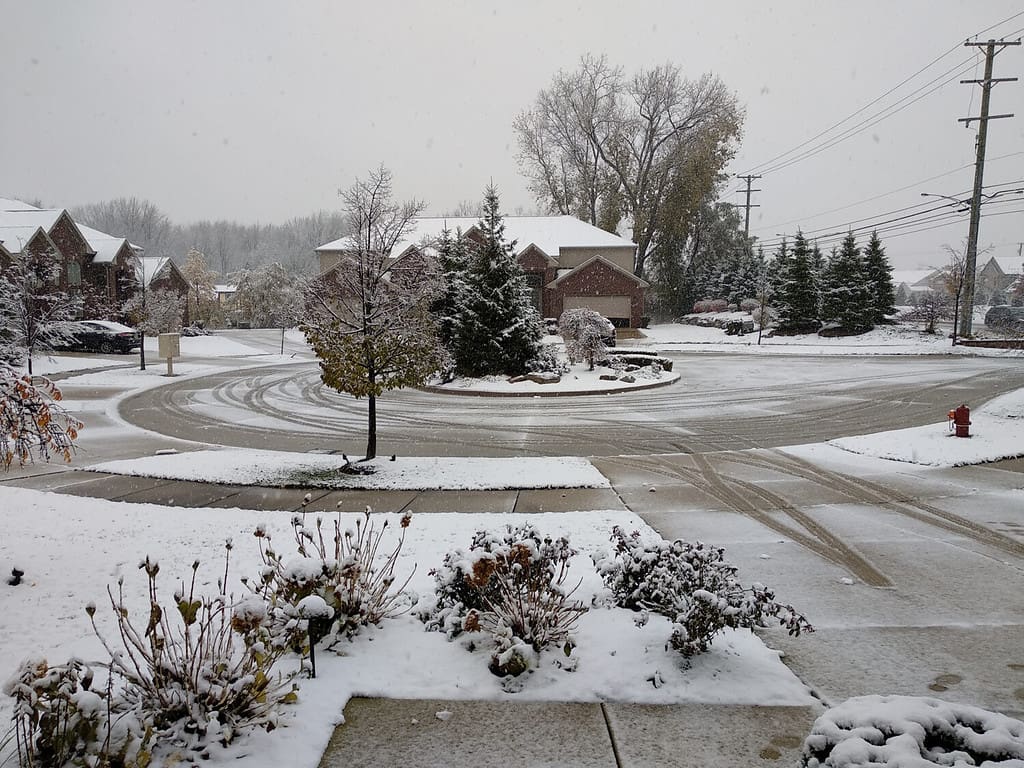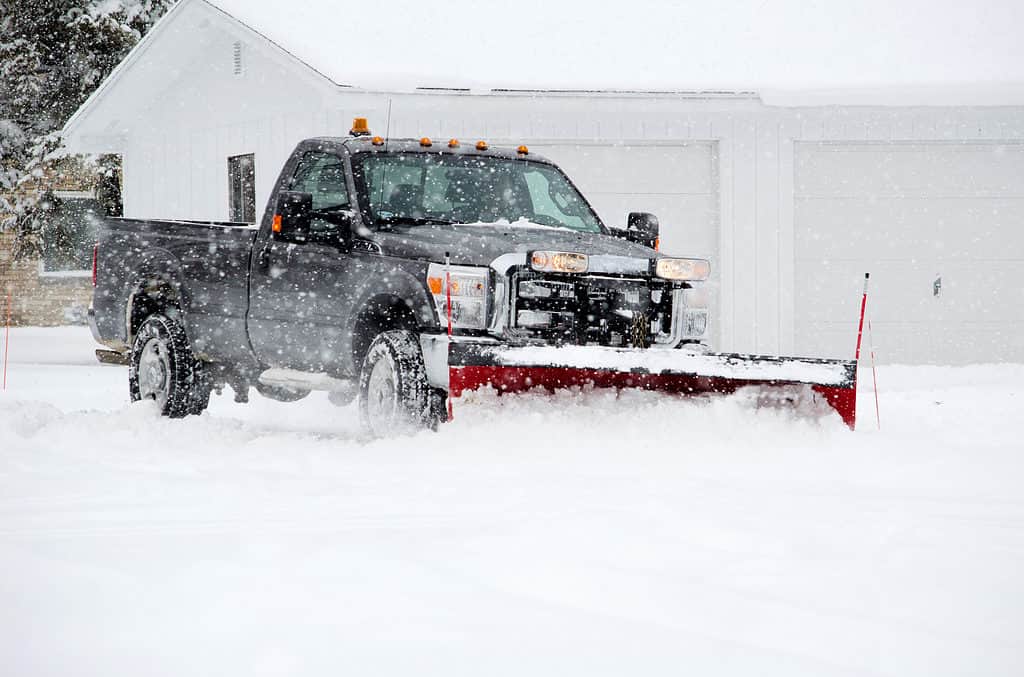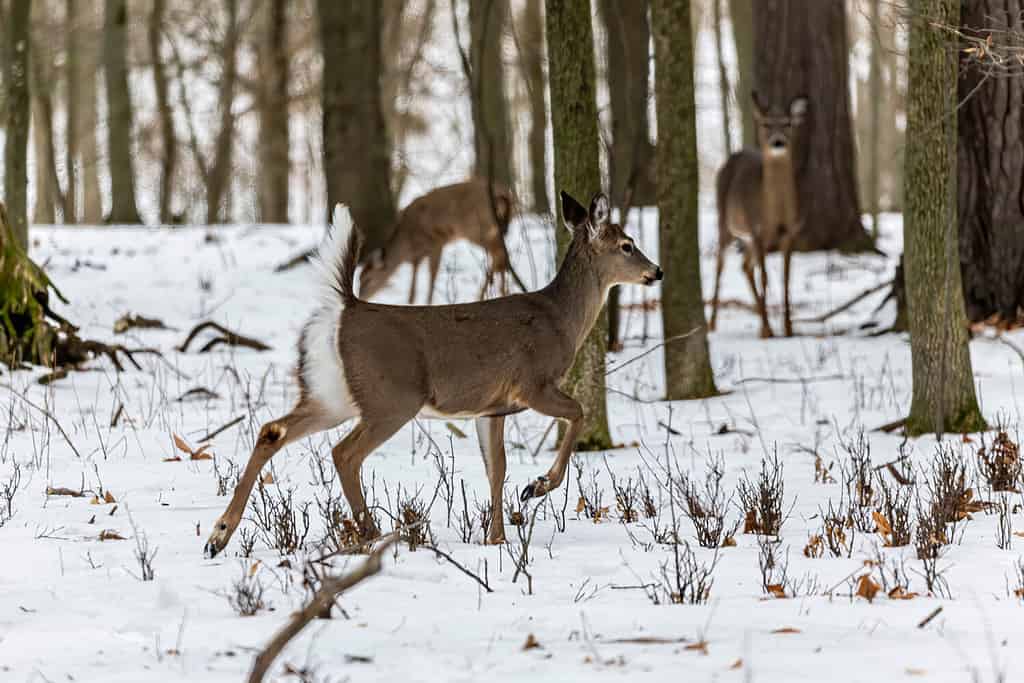The state of Michigan is no stranger to massive snowstorms. As a northern state in the middle of the Great Lakes, it receives plenty of moisture and arctic blasts of air from Canada. Snow in October is not so typical, though. The earliest snowfall on record for Michigan is October 16. That was in 2006. Before the storm we will discuss here, the previous record for the most snow in October was 22.1 inches in 2020. So, what was the biggest October snowstorm in Michigan, and how did it compare to typical Octobers and the previous records? Keep reading to find out.
The Biggest October Snowstorm in Michigan History, October 17-18, 2022

Communities throughout Michigan saw an unusually early snowstorm over October 17-18, 2022.
©Shankar balaji/Shutterstock.com
October of 2022 began with the remnants of Hurricane Ian loitering off the East Coast, causing flooding from the Carolinas to New Jersey. A significant drought lowered river levels across the United States, including the Great Mississippi. To top it all off, the Pacific Northwest was experiencing a historic heatwave in the middle of the month, with temperatures breaking the 80℉ mark for several days in a row.
It should not have been too surprising, then, when Michigan experienced its biggest October snowstorm over the 17th and 18th of 2022. The two-day lake-effect-aided storm dumped 18.1 inches of snow along the corridor from Negaunee to Marquette, breaking the state’s previous October two-day snowfall record of 13 inches, set in 2002. Though there were reports of higher snowfall totals in the Upper Peninsula, Marquette is the official climate site for the UP. Official climate sites are the only sites eligible to establish record events for the NWS. Despite the storm, Marquette did not set a new Michigan snowfall record for October.
Impacts in Michigan

The October snowstorm caused problems with snow-covered roads.
©Susan B. Sheldon/Shutterstock.com
The two-day storm resulted in multiple accidents and traffic disruptions. The high winds that came with the storm led to 20-foot waves on Lake Superior. These winds also pushed water onto the shoreline around Marquette, causing some flooding. Since it was early snow, many trees still had heavy leaf cover. The weight of the snow on the leaves and branches caused many to collapse, leading to power outages for about 30,000 people. The power was restored for most after a day or two.
Wildlife During the Storm

White-tailed deer are accustomed to heavy snowstorms.
©Karel Bock/Shutterstock.com
Toads burrow three feet deep or more before the first freeze; then, they brumate—slow their breathing and heart rate—to withstand the cold temperature. They will come out at times when the temperature climbs above 40℉. Deer grow thicker coats that allow them to conserve their body temperatures. They will also seek natural shelter from the cold and wind, such as evergreen stands, or seek out sun-drenched fields to huddle together and share body heat. Another thing they will do is slow their movement down to control their metabolism. Most animals will also eat a lot in the months leading up to winter, building up layers of fat to insulate them and allow them to draw on energy throughout the cold, hard months. Other animals, such as snakes and skunks, will hibernate. October snowstorms around the Great Lakes are nothing new to the wildlife here.
What followed After the October 2022 Storm

Two days after the biggest October snow in history, parts of Michigan experienced 70-degree weather.
©Konoplytska/iStock via Getty Images
Michigan began a rapid warming period after the cold snap and the winter storm. By the 21st, temperatures were approaching the mid-60s in the Upper Peninsula. The early winter storm had come and gone, though the Great Lakes waters were rough for a few more days.
The photo featured at the top of this post is © Vitaliy Kaplin/Shutterstock.com
Thank you for reading! Have some feedback for us? Contact the AZ Animals editorial team.







